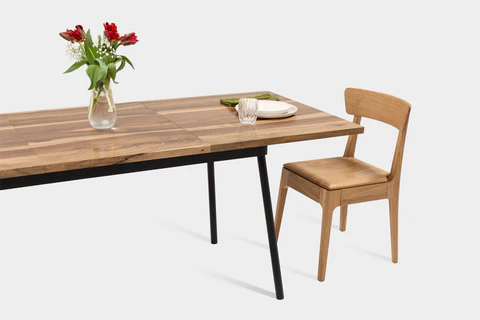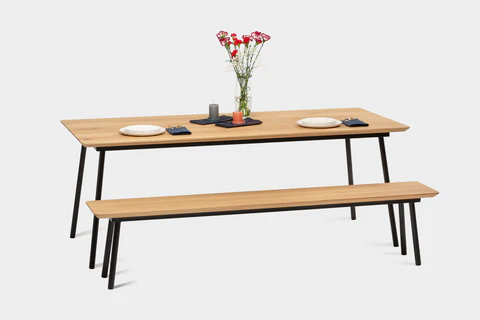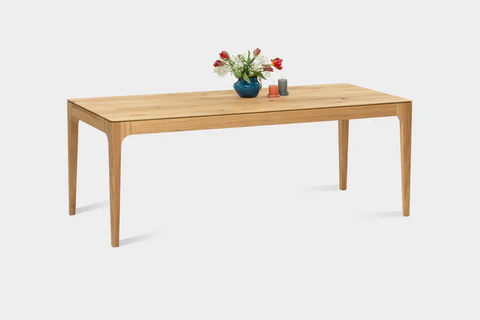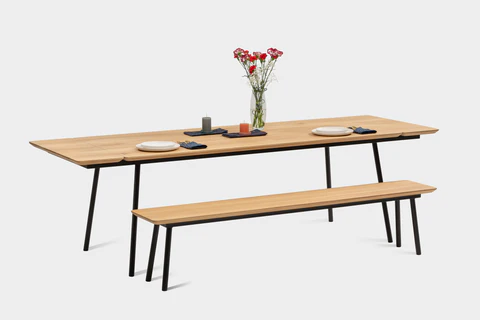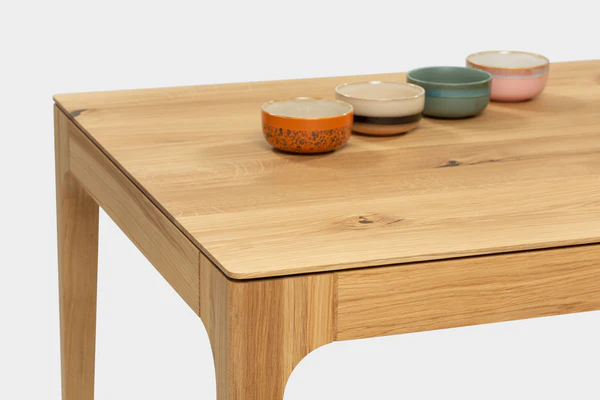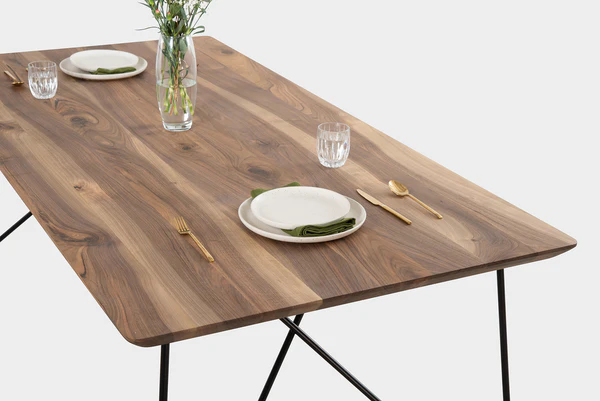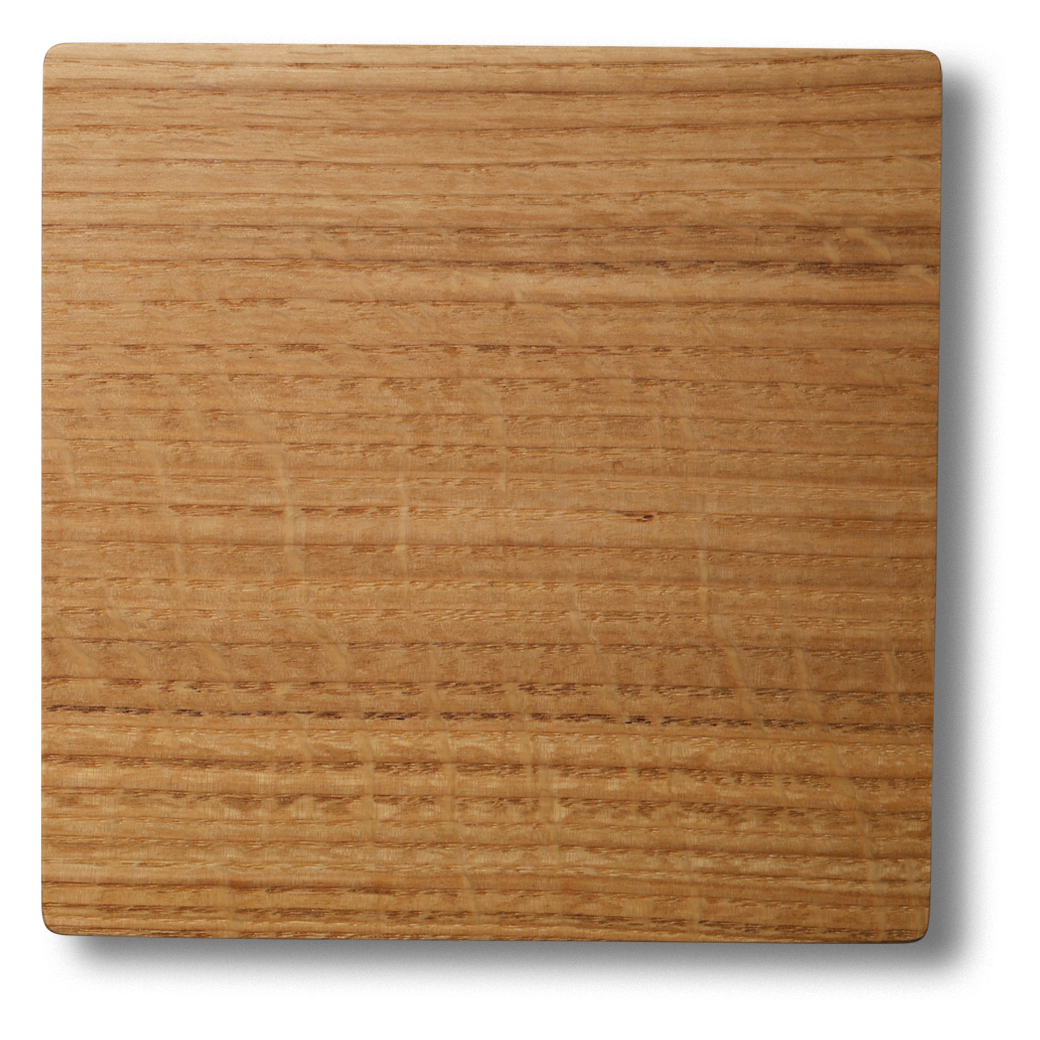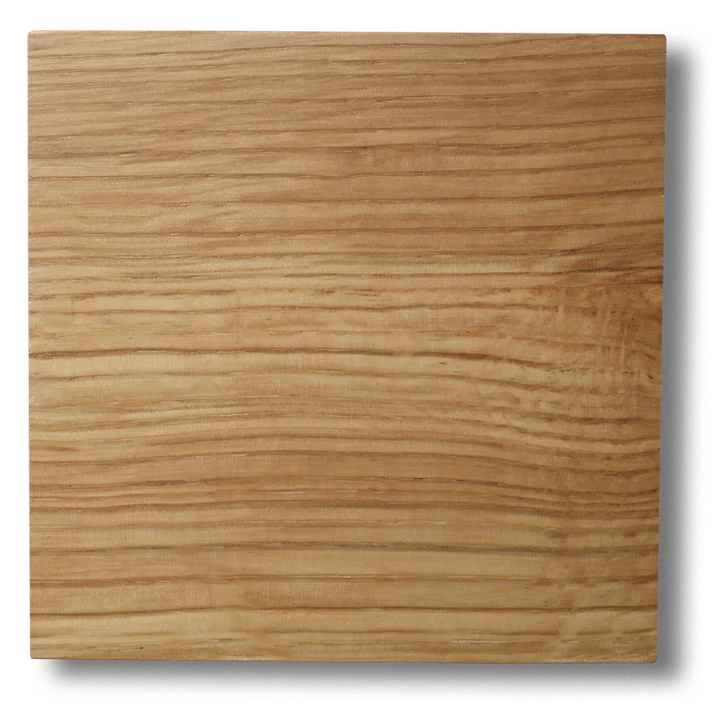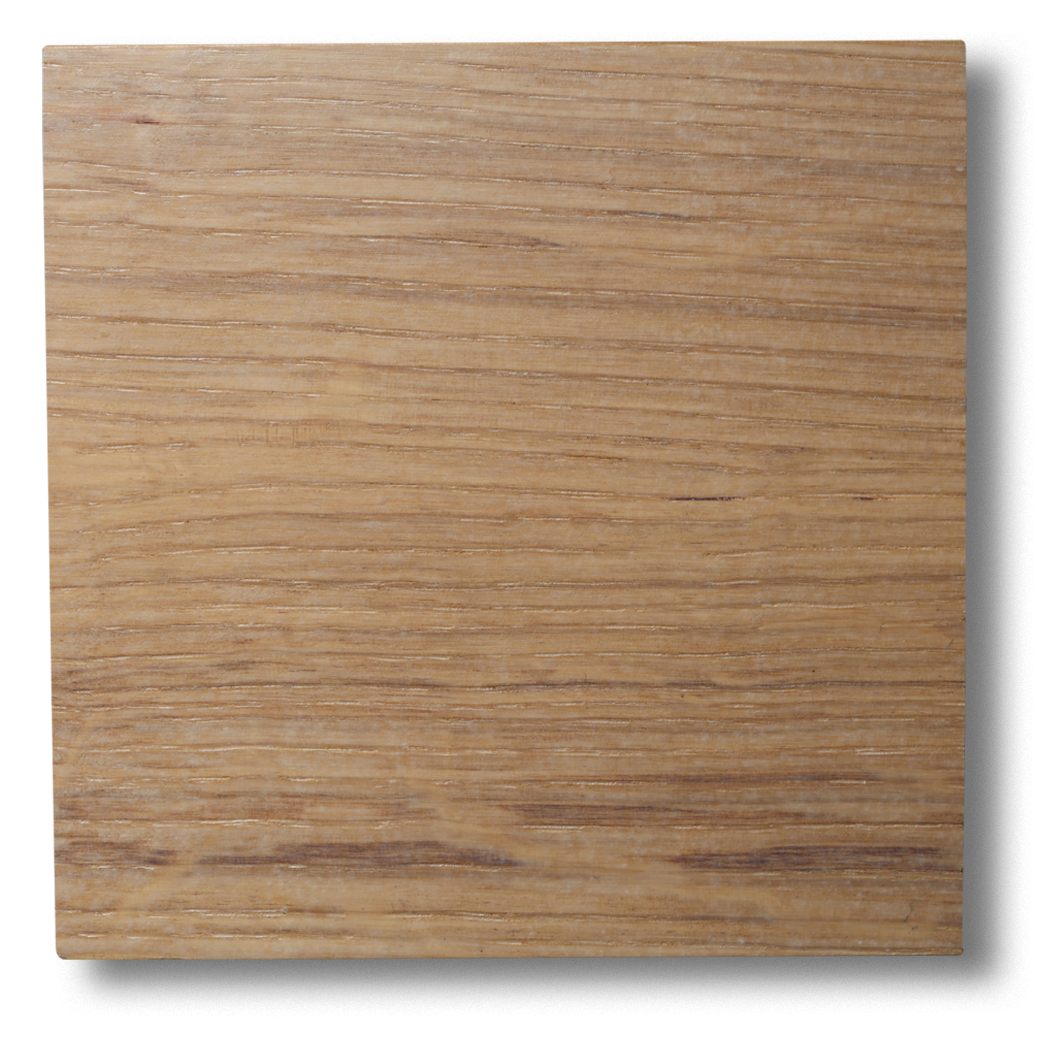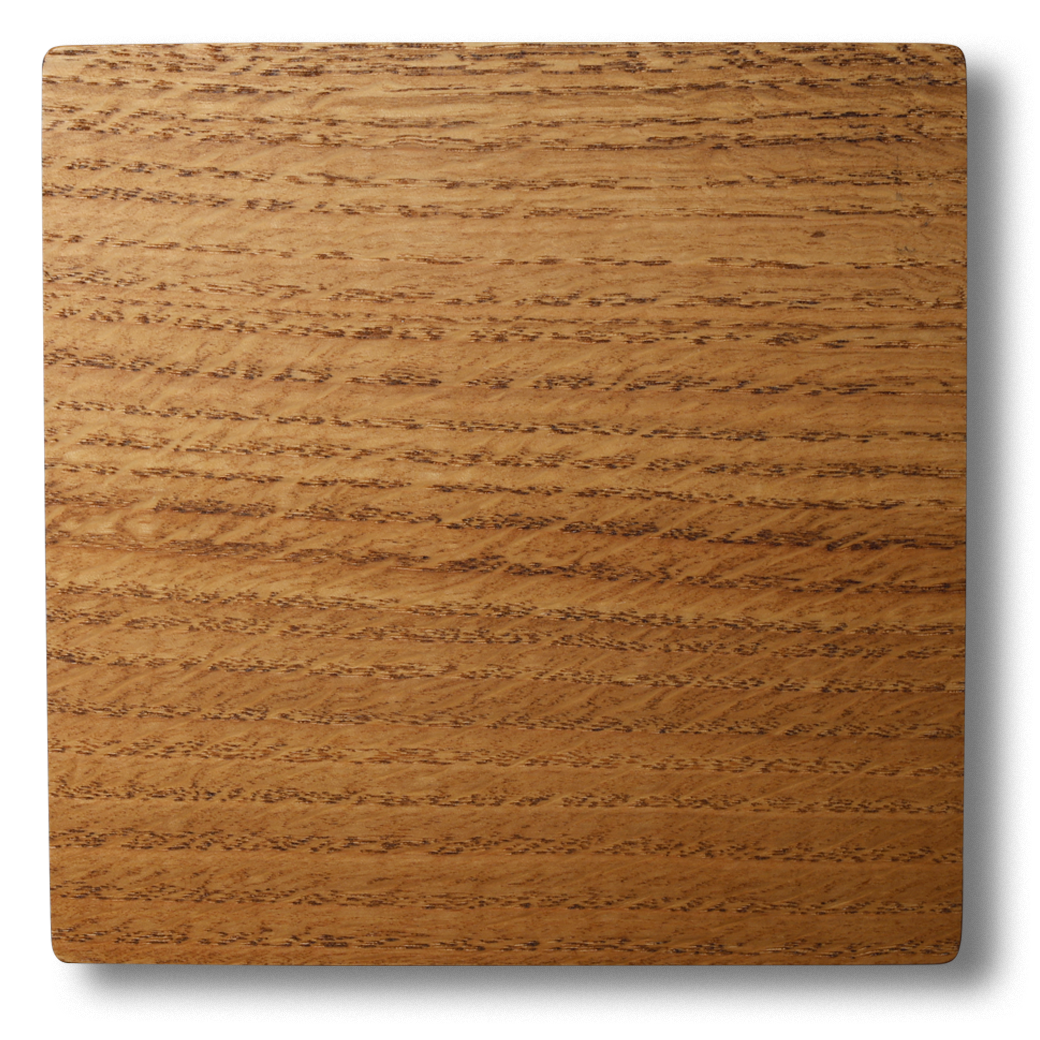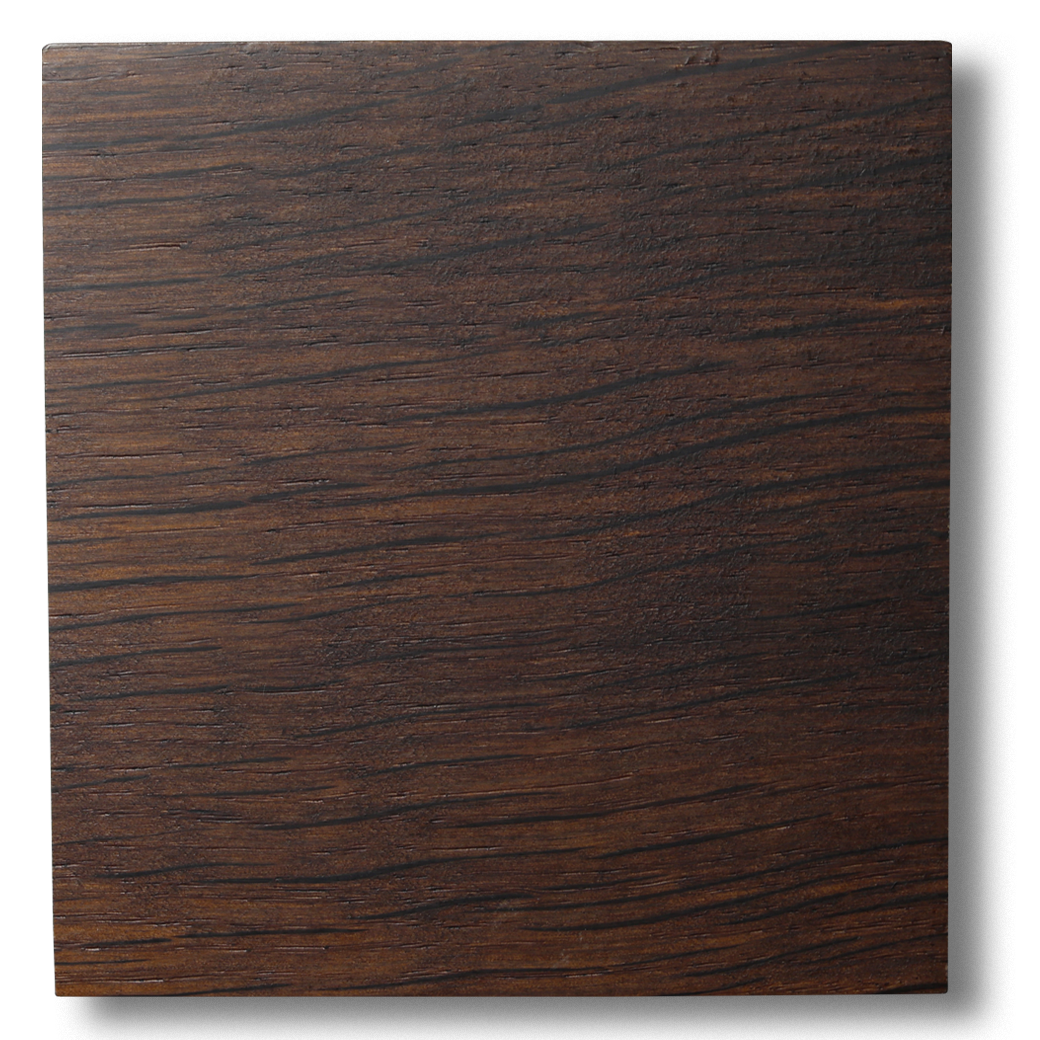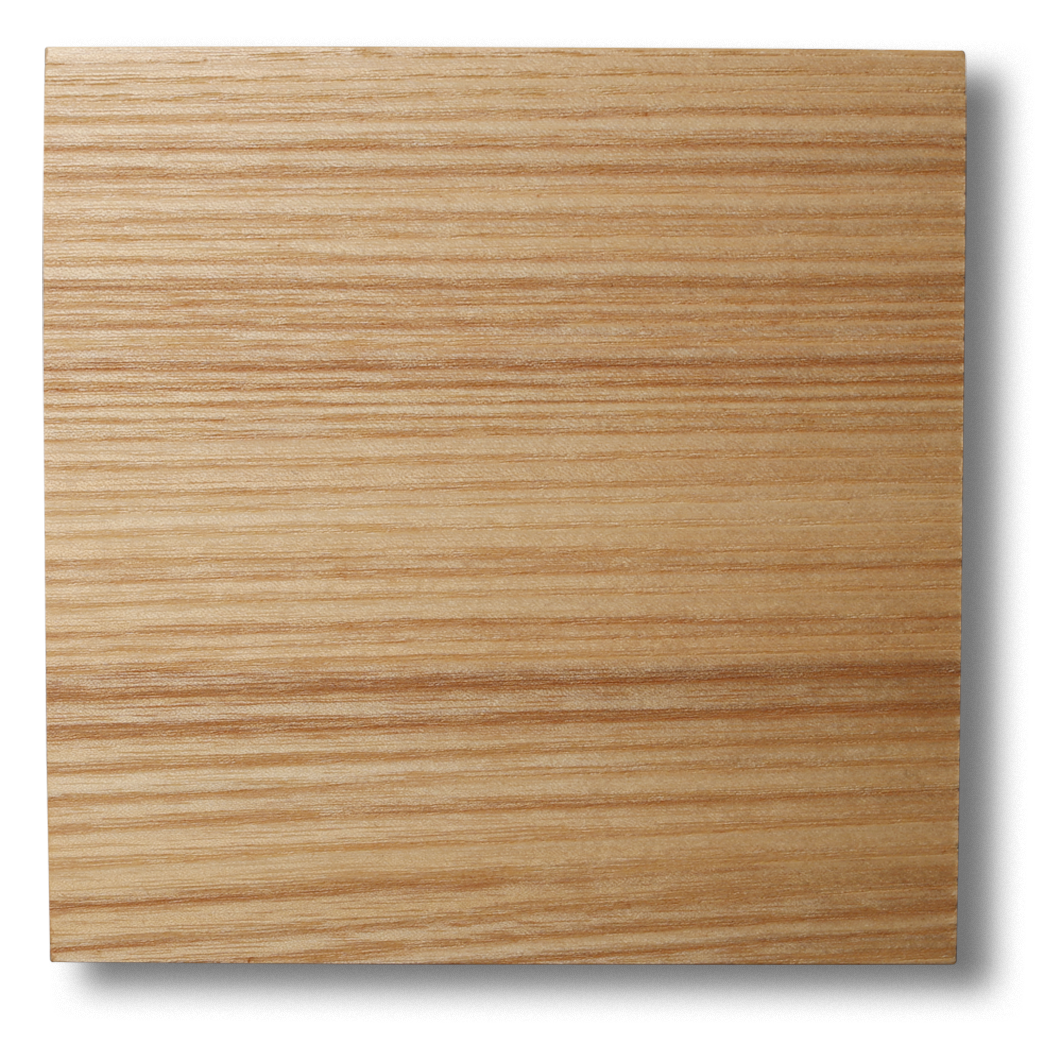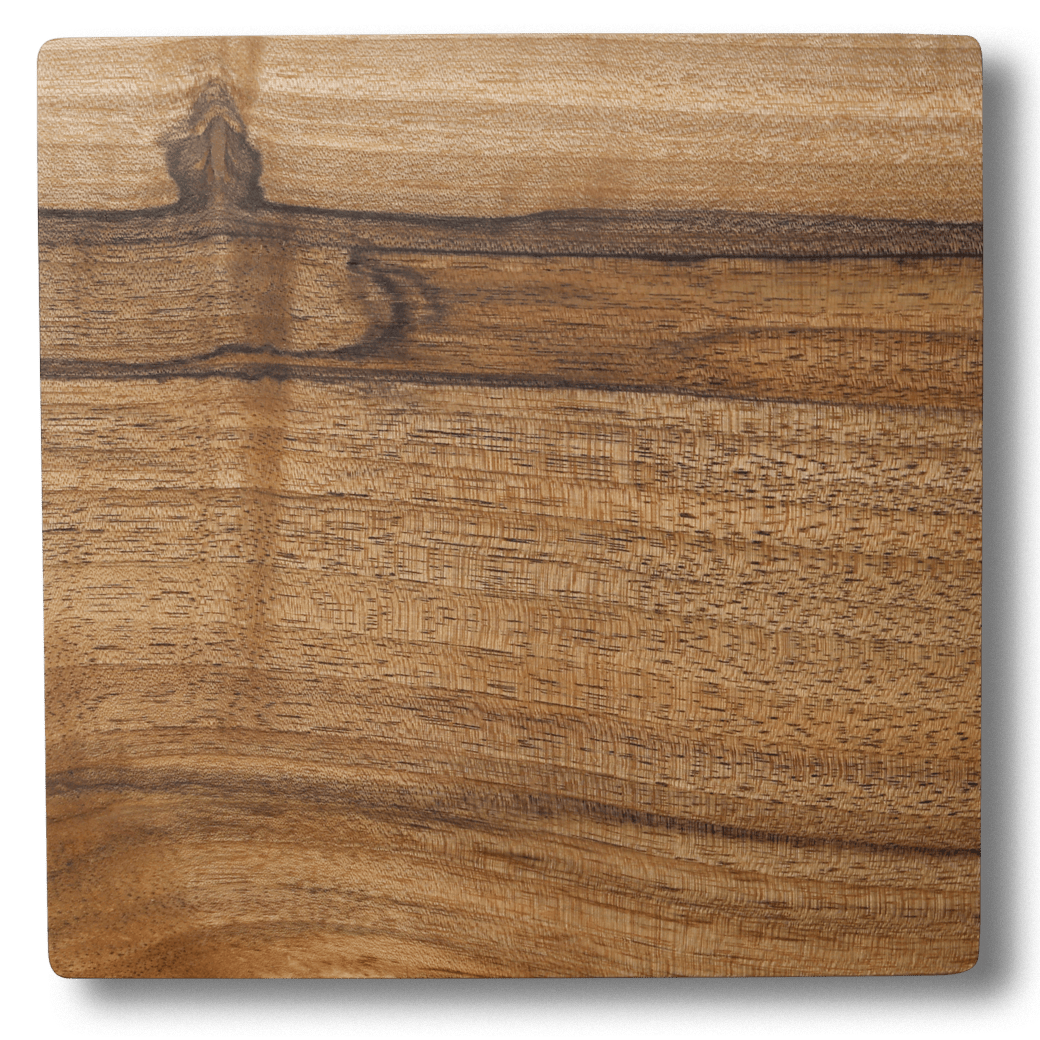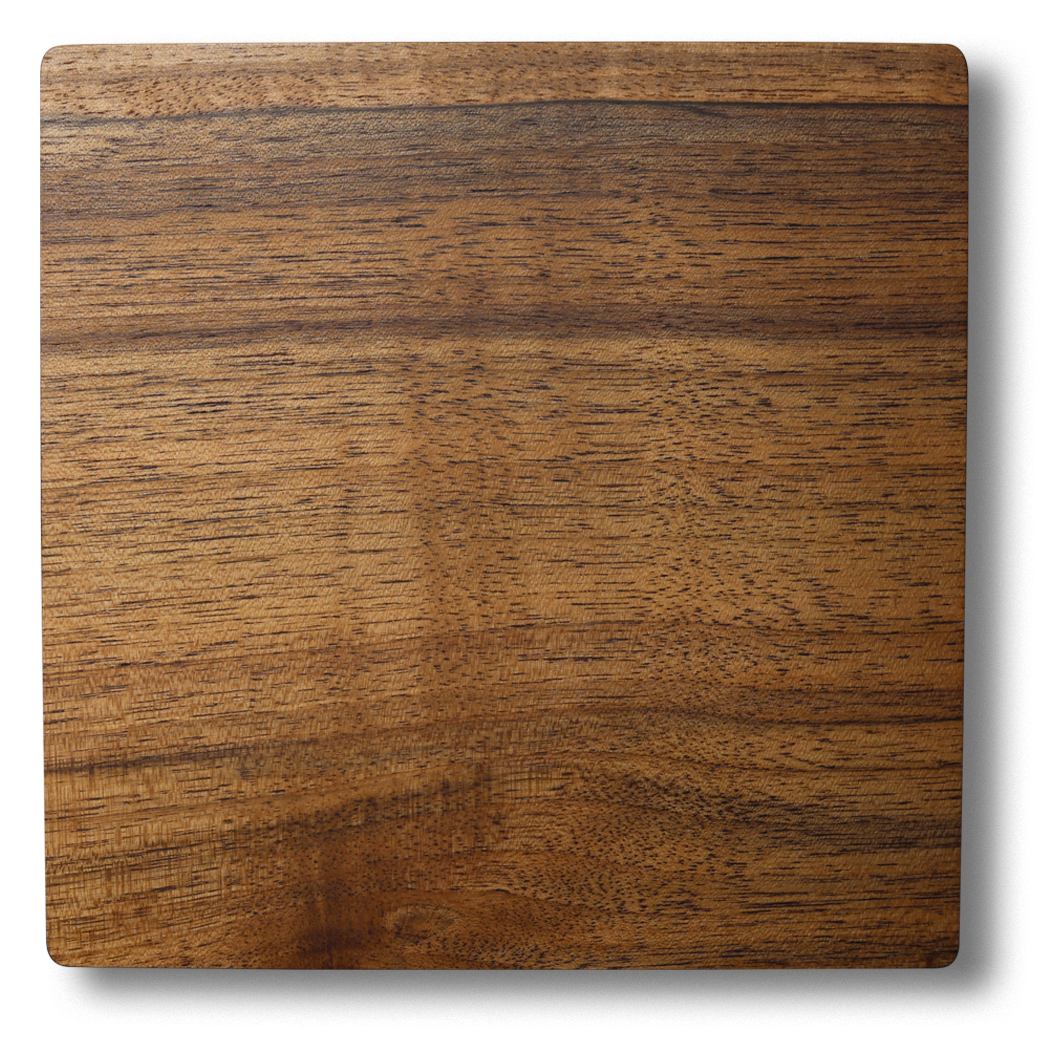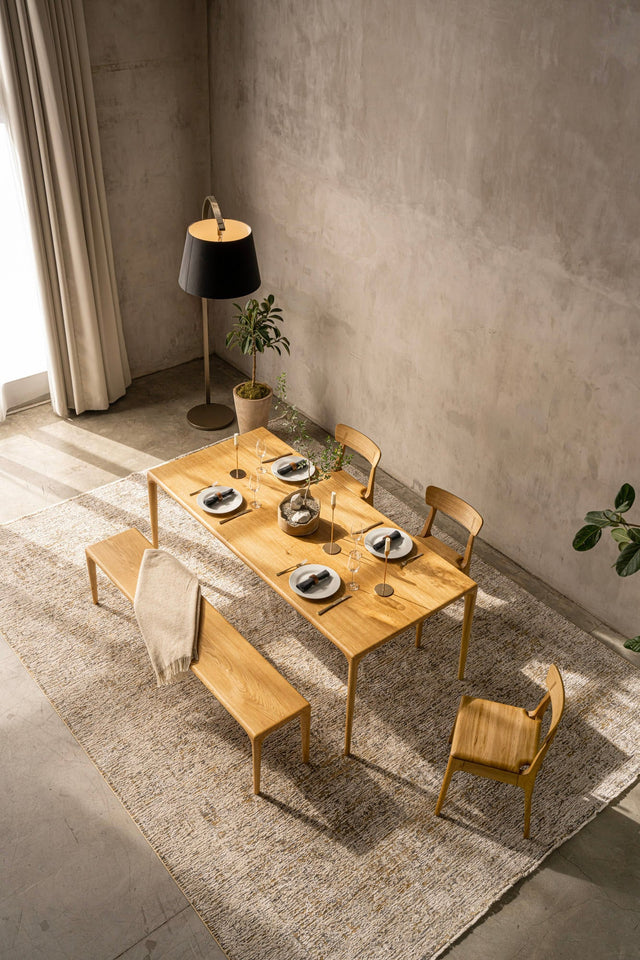Dining Table Size Guide
Dining Table Size Guide
So, you want to buy a dining table. It might sound obvious, but one of the most important things to consider is the size of your desired piece, and how it will look in your room.
There are numerous factors which can shape your decision, such as the size of your space, the positioning of your table, how much space the legs take up and where they are positioned, and how you plan to use your table - from small family meals to large social gatherings.
It’s certainly not a decision which should be taken lightly; picking the right dimensions is fundamental to creating the best visual and practical balance for your room.
Hardman Design can custom build tables to provide you with a bespoke piece for your needs.
This guide will provide you with some key information to help you pick the right sized table.
The Size Of Your Dining Table: Number Of Seats
One of the biggest considerations is knowing how many people will generally be sitting around your table, and how many seats you want to accommodate.
As a general rule of thumb, these are the rough sizes depending on the number of seats:
|
2 Seater |
4 Seater |
6 Seater |
8 Seater |
10 Seater | 12 Seater |
| Minimum 60 x 70cm |
Minimum 120 x 70cm |
Minimum 180 x 80cm | Minimum 220 x 90cm |
Minimum 270 x 90cm | Minimum 330 x 90cm |
These dimensions are based on rectangular tables. Hardman Design’s dining tables are hand built in this shape, but we can custom-build tables for a bespoke shape, size and finish.
Rectangular tables have multiple benefits; great for their practicality, functionality and comfort.
A rectangle table generally fits well into the design of a room, and can typically accommodate more people and more space for dishes - especially compared to a circular table.
Benches, too, work well with a rectangular table and are a great idea to maximise this space, as they enable people to squeeze up, if necessary.
A rectangular table can also be a versatile solution within a room, looking great against a wall or window, or taking pride of place in the centre of a room.
Rectangular tables tend to have their legs positioned on the four corners - instead of in the middle like many circular tables - helping to give each diner more comfortable leg room underneath the table.
Generally speaking, a standard table is 71 to 76cm in height, so when it comes to seating, opt for a chair or bench from around 43 to 58cm from floor to seat.
Hardman Design handcrafts a range of dining benches and chairs. Visit our seating collection to find your perfect seat for your table.
Choosing The Right Size Table For Your Room
Knowing how the table will fit in in your room is another key consideration. For instance, how it will work in relation to other pieces of furniture, its proximity to doorways and walls, and allowing enough passing space.
As a general rule of thumb, you will need a minimum of 30 to 36 inches (76cm) for clearance space, measured from the nearest obstruction - whether it be a wall, door, window or furniture - to your chairs.
Where relevant, allow 120cm square for an entrance or doorway. If you’re putting your table into an open-plan area, this isn’t something to factor in.
To ensure you do not choose a dining table size that is too small, don’t leave more than 6ft (183cm) from the edge of the room, at least on one side.
How To Estimate The Size Of Your Dining Table
Perhaps one of the best ways of selecting the most appropriate-sized dining table for your room is mocking up how your furniture will look. This will really help you experience the feel of your table and how it will work in your space.
There are a number of ways that this can be done, including using masking tape or cardboard to replicate the size of your desired table.
For a more complete picture, you can even fill this space with books/newspaper to gauge the height and mass of the table.
Aside from recreating the look and size of your table, you can also map out the room to scale on paper, including walls, walkways and other furniture.
It is important that you don’t just measure the size of your table; instead, think about how it will work in practice. Questions you need to be asking include, have I left enough room for doorways and drawers to open? Have people got enough space to push their chairs out? Can they walk behind pushed-out chairs?
This type of planning will create a clearer picture and help ensure you select the right-sized table for both the look and functionality of your space.
Extendable Dining Tables
Extendable dining tables are a great option.
In fact, this type of furniture has enjoyed something of a revival in recent times.
And when looking at the benefits, it is easy to understand why extendable dining tables are en vogue.
Highlights include:
- Dynamic Use Of Space: One of the biggest advantages of an extendable dining table is its dynamic change in size, starting in a smaller form before easily increasing in size, when needed. This functionality is a big space saver and means that a larger dining table does not dominate your room; but can be expanded, when needed, and can be easily put back to its original form. Of course, take the size of the extension into consideration when deciding which option to go for, and factor this into any measurements pre-purchase.
- Plenty of space: Hosting a social gathering or entertaining extra family members? Then extend your table for extra space. And that’s the great thing about this type of furniture, extending dining tables enable you to expand the table when you need a couple of extra seats. And the dynamic increase in space isn’t only beneficial for meal times or gatherings. It can also be useful for other functions, such as if you require your table to double up as a desk as part of a home office, or if the kids need extra space for homework/hobbies.
- Available in different sizes: Hardman Design’s extendable tables are available in a range of sizes, providing you with plenty of versatility. When picking the size, consider how many you want to seat and how often you are likely to extend the table. For instance, our Mira Dining Table can have extension leaves of 60cm or 70cm - or can be custom built - so the size of the extension depends on your needs and your space.
- Beauty: Extendable Dining Tables are attractive additions to the house. Typically, the leaves or extension panels are either hidden within the fabric of the table, or can be added by sliding the leaves into place at each end of the table. This is certainly the case with Hardman Design’s extendable dining tables. What’s more, our signature collection tables can be built to convert into an extendable table, ensuring you benefit from the aesthetic beauty of our handcrafted, best-selling pieces, as well as the functionality of an extending dining table.
How To Choose The Right Sized Dining Table - Summary
Selecting the best-sized table takes some well thought-out planning, considering how you plan to use it and the space you wish to place it in.
But with some quick calculations before purchase, you can ensure you choose the correct piece which really sets off your room and becomes an important focal point of your house.
View Hardman Design’s dining table collection, with all pieces handcrafted from locally-sourced and sustainable materials. Each item can also be custom made to provide you with a bespoke solution for your needs.
Alternatively, contact us to speak to our team for some advice.
.
.
.


